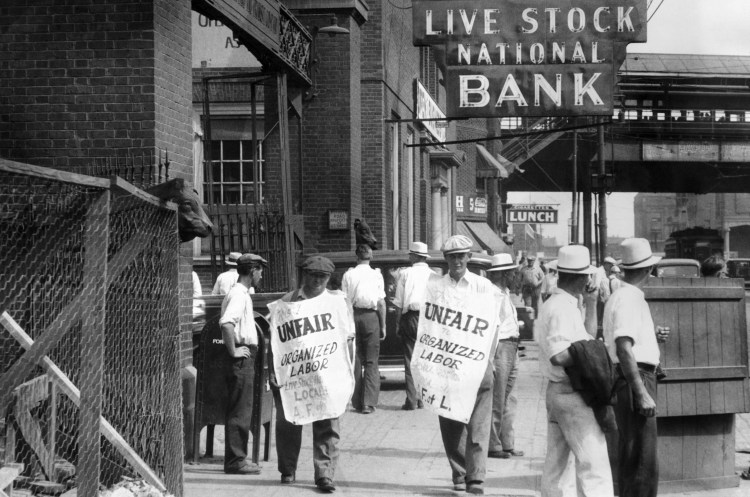Mass unemployment, social displacement, political upheaval, even the end of humanity – the doom and gloom of the AI future has gotten a lot of attention recently. The prospect of human slavery to robot overlords has long been a theme in science fiction, of course – but that was when the jobs threatened were blue-collar factory ones. It’s only now that artificially intelligent robots and computers are replacing middle class jobs that the AI threat has appeared on the radar of the chattering classes.
The weakening of the middle class due to the AI takeover, it appears, will naturally lead to an even more bifurcated society, with a few Haves – the tech masters who run the robot economy – and masses of Have Nots, the downwardly mobile majority who once would have been the well-paid skilled workers in high-end manufacturing, accountants, programmers, and even lawyers.
Obviously, some of the accountants and lawyers will have to stick around; there are always going to be problems that AI can’t figure out. And even if it could, it’s probably a good idea to keep a few humans around. But those jobs will be few and far between. What will the rest of the 99 percent be doing? Well, there are many service industry jobs where you would want to have a human face – receptionist, hotel registration, doorman (or door holder), Maître D. Those who can afford to eat out and stay at hotels will feel more comfortable dealing with humans in these roles.
The problem is that the jobs that do survive will mostly be low-wage “McJobs” — jobs that offer little, if any, prospect of advancement (akin to the modern fast-food move up the ladder from manning the deep frier to “assistant manager”). What effect will this feudalistic lack of social mobility have on society? Actually, as unprecedented as AI is, it actually may revive social trends that we thought went out with the turn of the century – the 19th, that is, not the 21st:
1. The rise of the “guilded” class. Maybe in the future it will happen, but for the time being, training AI-equipped robots for skilled trades like plumbing, electrical work, locksmith work, and carpentry is not feasible. Those jobs, which will still pay a decent wage, will start to look pretty good to the formerly upwardly-mobile who previously disdained them, preferring a college degree as the ticket to the good life. If there is currently a shortage of professionals in many of the skilled trades, expect that shortage to turn into a surfeit in the coming years. That will likely lead to …
2. The end of college. College loan debt has turned into one of the biggest budget black holes in the US today, with more and more students borrowing huge sums of money to finance degrees at all levels, in the hope of cracking an increasingly competitive job market. But in the near future, it won’t be their classmates that these grads will compete with – it will be the robots, and most will find themselves losing out. As a result, young people who aspire to more than a McJob will opt for trade schools where they can learn skills. Either way, they won’t need, or want, to go into hock financing a college education. The top-tier universities, of course, will be educating the children of the 1 percent; it’s the state and non-Ivy private colleges that will lose out.
3. The return of the unions. With the revival of the working class, the unions that it engendered in the past will also make a comeback, especially as class consciousness grows. But it won’t be the hotel clerks who survive that will unionize; after all, there will be plenty of unemployed out there to replace them. It’s the skilled workers, like the plumbers and electricians, who will demand fair pay for the value of their skills. While today it’s customary to shop around for the best price on services, the robot revolution will have a profound enough impact on the have-nots to force them to organize, at least in some form.
4. A new New Deal? The last time there was a hollowing out of the middle class was during the Great Depression – and it took massive government intervention in the economy to set things right. The United States admittedly has a much more socialized economy now than it did in the 1930s, and special interests carry a great deal of weight in Washington nowadays – but as the full pain of AI is felt among the vast majority, there will be increasing pressure on politicians to do something.
What that something will be, of course, is impossible to predict right now. The other side of this balance sheet — our own “natural” intelligence — can be even harder to predict, and will be the real source dictating where and how these changes will be made.
Artem Burachenok is a Partner at Flint Capital.


